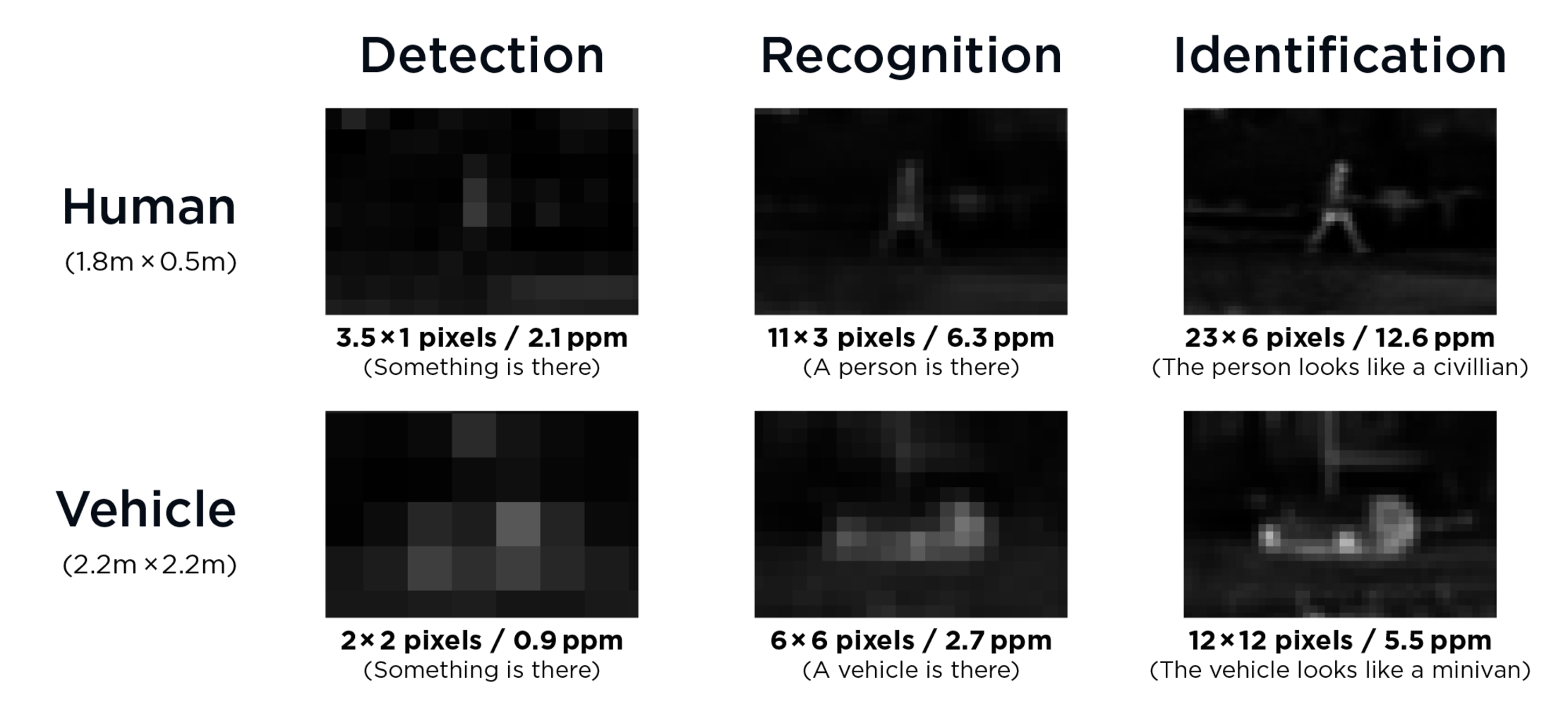Alternate Methods
The examples above show simulated detail levels at the distances Infiniti uses for DRI, but it’s important to know that different manufacturers may use different methods to determine their DRI numbers.
For example, L3 and FLIR have cameras that are almost identical in specification and should be within 5% of each other, but due to different assumptions on the conditions and atmosphere, one is rated for 21km of detection while the other is rated for 52km. Clearly these ratings are too arbitrary for proper comparison which is why for the sake of transparency and simplicity, Infiniti bases our DRI numbers on pixels on target, however pixels on target is not the only method available.
NVThermIP
The US Army has an updated thermal ranging model called NVThermIP, which is more mathematically sophisticated in order to yield more accurate results. It requires inputting a variety of values that specify the camera lens, detector, framing and sampling electronics, signal processing electronics, viewing display, atmosphere, target and task. The problem is not only are these a lot of inputs, but quite often those values aren’t even known. In addition, there are so many variables and equations at play that it’s often unclear what’s going on.
Pixels on Target (PPM)
Used by many manufacturers as a simpler alternative to NVThermIP, this method is done by calculating the number of pixels needed across the critical dimension of the target and then converting that value to the required pixels per meter. The sensor and lens measurements then allow us to easily calculate the pixels per meter performance of the camera across a full range of distances and calculate the distance where each level of detail is achieved.
Of course a drawback to this method is that variables like weather and atmosphere are not included in the calculation, but those values are rarely accurately known anyways.
At Infiniti, we calculate the critical dimension by using the square root of the target height multiplied by its width, resulting in a critical dimension measurement for a human at 0.95m and a military vehicle at 2.2m. Using the Johnson Criteria of one line pair for detection, 3 line pairs for recognition and 6 line pairs for identification, and assuming one line pair is equal to two pixels, the required DRI values for PPM are as shown in the chart below.
|
Human Detection
|
2.1 ppm
|
|
Human Recognition
|
6.3 ppm
|
|
Human Identification
|
12.6 ppm
|
|
Vehicle Detection
|
0.9 ppm
|
|
Vehicle Recognition
|
2.7 ppm
|
|
Vehicle Identification
|
5.5 ppm
|
